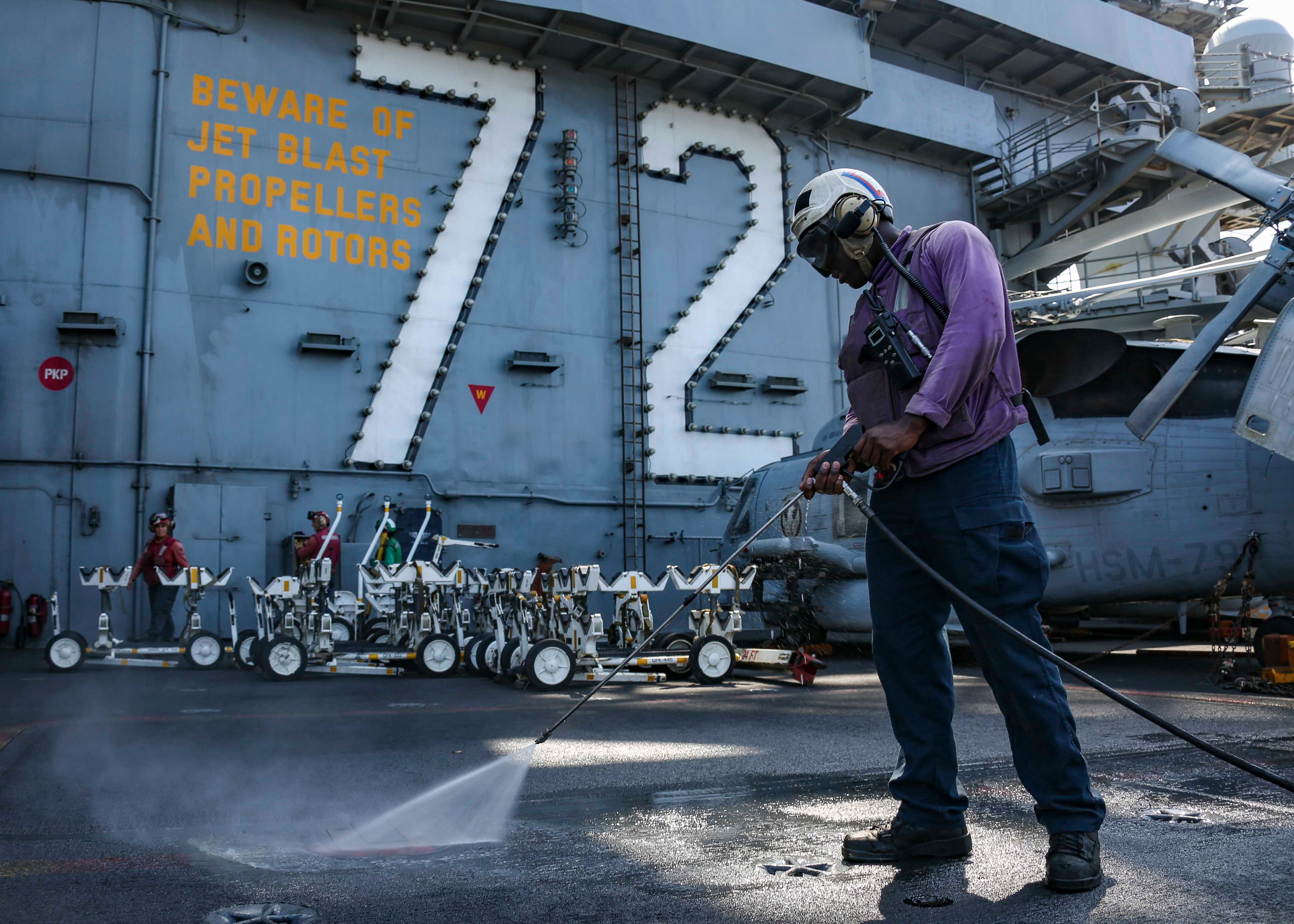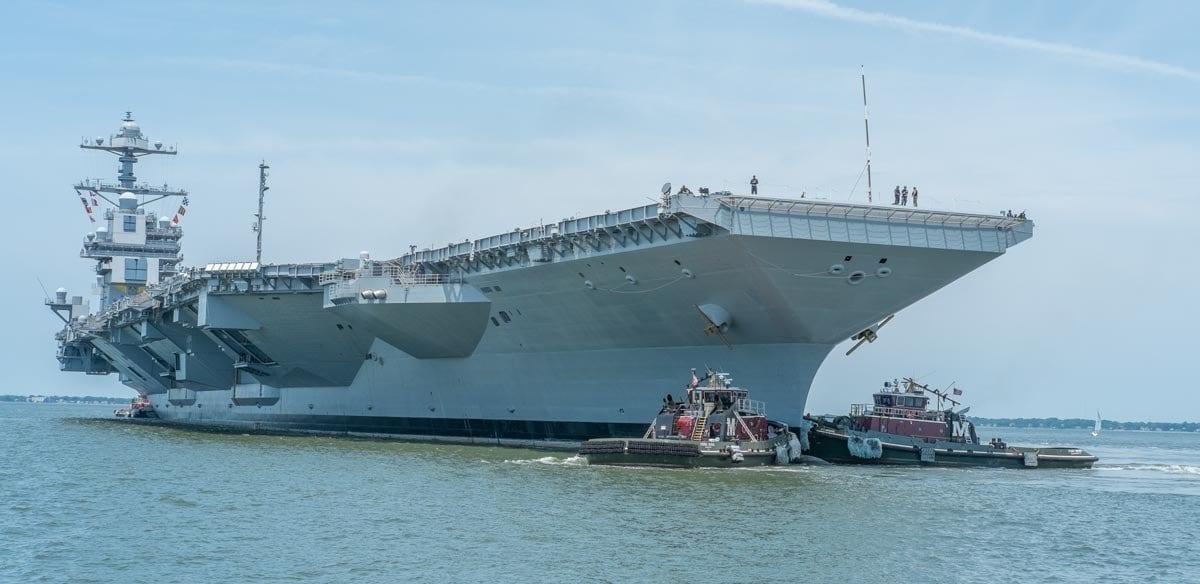America’s foes are becoming far too capable and the Navy and Marine Corps must start plotting unconventionally to undermine them, Under Secretary of the Navy Thomas Modly said Friday.
The National Defense Strategy, which calls for shaking up how the Navy deploys is “a step in the right direction," but Modly believes the sea services must make that operational in an era of great power competition keyed by the rise of China and Russia.
“It’s a great tag line, I guess, but my perspective on this always has been that what happens over time is just the range of adversaries just get more diverse," Modly said.
Speaking during the annual Military Reporters and Editors conference at Navy League headquarters in Arlington, Virginia, Modly’s wide-ranging address touched on the motives and methods of both proven enemies and potential foes.
He pointed to Al Qaeda’s terror attacks on Sept. 11, 2001 and the immense destruction to America’s economy by a small ring of non-state conspirators, and Russia’s invasion of Crimea and ongoing efforts, including war, to undermine Ukraine’s government.
“The Chinese are doing the same thing. They’ve got a strategic vision for what they see as their future and they’re executing it in a very coordinated, nationally based way,” Modly said.
Addressing potential enemies like China, Russia, North Korea and Iran will require not only a military response but one that combines all elements of federal power, including diplomacy, cyberwarfare and economic tools.
“We have to think about ways to complicate their thinking, make them uncertain, make them doubt their capabilities,” Modly said. “That’s the full spectrum.”

Modly’s latest readiness snapshot for the Navy and Marine Corps came through an external audit by Ernst and Young. While the sea service maintains a 99.9 percent accuracy of its audits on individual warships, it suffered from a lack of information on its shore-based facilities, he said.
He disclosed that the audit team found a warehouse in Jacksonville, Florida, last year that contained more than $126 million in F-14 Tomcat, P-3 Orion and P-8 Poseidon parts.
“Not only did we not know that the parts existed, we didn’t even know the warehouse existed,” he said.
The Navy also needs to press industry to speed business reform and cut costs, Modly said, nodding at the “situation” with the aircraft carrier Gerald R. Ford as an example.
The first in its class, Ford has been beset by myriad systems problems and cost overruns that delayed the flattop from deploying until 2024, according to Capitol Hill testimony earlier this week by Vice Adm. Thomas Moore, the head of Naval Sea Systems Command.
RELATED

“Part of the problem we have with the carrier is we only have one supplier for that," Modly said, referring to Newport News Shipbuilding, a division of Huntington Ingalls Industries, the nation’s sole builder of aircraft carriers.
"Who else are we going to go to? If they don’t perform, your ability to hold them accountable is very, very difficult.”
Modly’s comments come as Navy Secretary Richard Spencer and Rep. Elaine Luria, a Virginia Beach Democrat and retired surface warfare officer, traded barbs over the Ford in recent days.
But Modly insisted his comments weren’t meant to bash Newport News Shipbuilding but were borne out of frustration stemming from the “shared responsibility" between the Navy and private industry.
“We as a Navy and as a Department of Defense have a lot to be held accountable for with respect to the Ford," Modly said. “Certain decisions that were made to put in all those new technologies at once on a new platform and I think we’re accepting responsibility for it.”
Courtney Mabeus-Brown is the senior reporter at Air Force Times. She is an award-winning journalist who previously covered the military for Navy Times and The Virginian-Pilot in Norfolk, Va., where she first set foot on an aircraft carrier. Her work has also appeared in The New York Times, The Washington Post, Foreign Policy and more.





